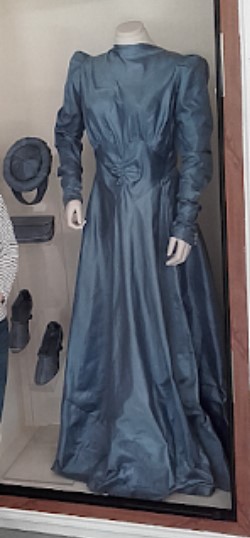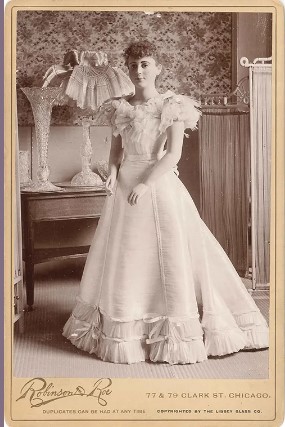
Thanks to Terry Lim, I have become acquainted with some dresses made with glass. I’m still a little unclear on details – possibly because I’m not a spinner but likely because we’re talking about cloth woven about 130 years ago out of glass! Seriously, glass and silk evidently made cloth that could “be folded, pleated, and handled in all ways as cloth”. ( quote from a copy of World’s Fair 1893 pamphlet re: Libbey Glass Company)
The cloth is made from spun glass – somehow, still bendable though of course breakable – and silk. Records that I’ve found indicate that the silk was spun by pulling threads off a glass rod, similar to how one might pull candy, and up to 200 (possibly more; sources vary) such threads would be called a “braid” and would be used as a weft thread. The next thread in the shed would be a silk thread, so the resulting fabric was about 200 glass threads to 1 silk thread, all on a silk warp.
Needless to say, the resulting cloth was expensive and heavy. The two dresses that the Libbey company created were estimated to each weigh about 14 pounds, not including any extra furbelows that might be added for decoration.
The company was trying to ‘make it big’ and literally built a working glass factory on the grounds of the 1893 World’s Columbian Exposition in Chicago, aka the World’s Fair. An actress, Georgia Cayvan, was so enamored by the glass objects created by the Libbey Company including shades, window curtains, and lampshades that she commissioned 12 yards of the glass and silk fabric and had a dress created – most likely the dress shown in these two views. She wore it but a few times, though at least once on stage, before determining that it was too brittle for long term use. It seems that, at this point, she allowed the Libbey company to display it at the World’s Fair, where the Spanish princess, Eulalia, Infanta of Spain, became enamored of the dress and requested one be created for her. She was so pleased with the result that she allowed the Libbey company to use the Spanish Royal Insignia in their advertising. As both Cayvan and the Princess were major celebrities at that time, the fortune of the Libbey Glass Company was pretty much assured. The dresses were such topics of discussion, there were articles written claiming that glass clothing was the ‘next big thing’ for the future. Unfortunately, cost and comfort (or lack thereof) hindered that particular prediction.
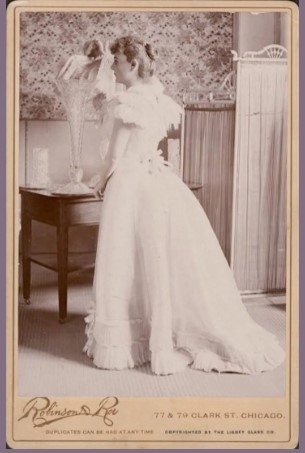
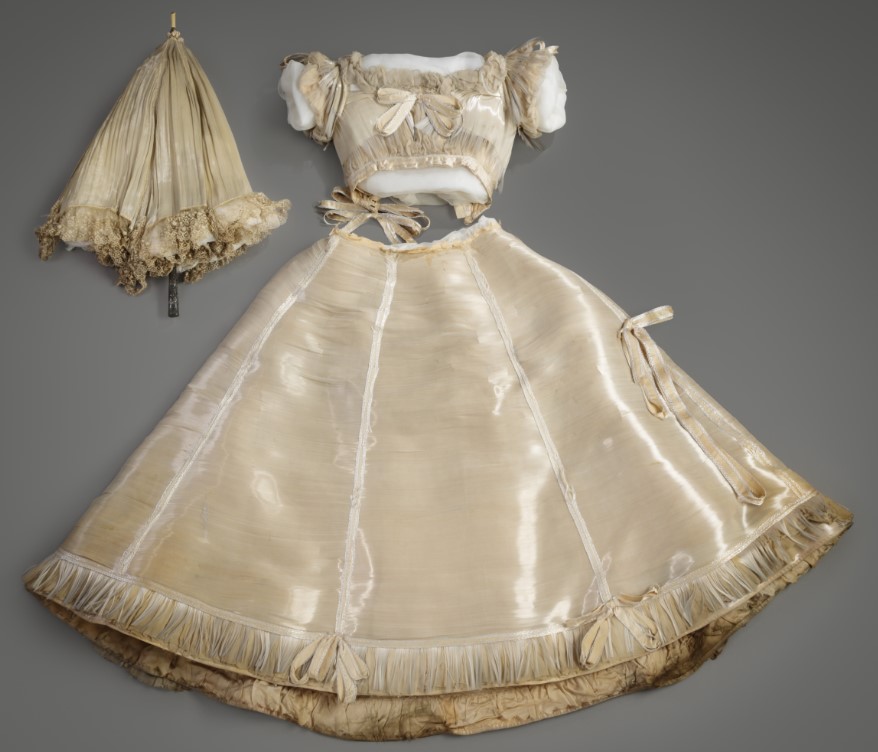
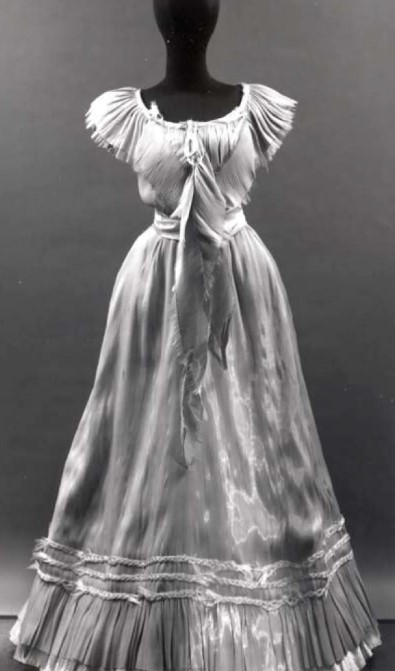
There have been two other glass dresses made. The one on the left was made in the same manner as the previous two, shown at the 1900 Exposition Universelle in Paris, and purchased and worn by an American actress and vocalist, Ellene Jaqua – of whom very little seems to be known.
The dress on the right was evidently made with industrial glass, for Helen Munro, in 1943 as a wedding gown. The owner said that the advantage was that it didn’t require clothing coupons in wartime Britain to create, but the disadvantage was that the shoes hurt her feet.
